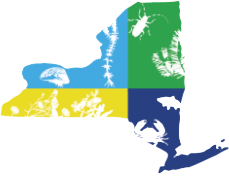Effects of Culling White-Tailed Deer on Tree Regeneration and Microstegium Vimineum, an Invasive Grass
Research Summary by Abby Bezrutczyk
Summary
As browsing by dense deer populations inhibits the growth of tree seedlings, it can also promote the growth of unpalatable invasive plants; both pose a threat to forest regeneration. Schmit and colleagues tested how repeated cullings of deer and the presence of invasive Japanese stiltgrass (Microstegium vimineum) impact tree seedling density. At their Maryland study site, the team measured trees, shrubs, seedlings, and the coverage of stiltgrass in 49 plots from 2006-2017; deer culling in the ~2500 ha park began annually in late fall of 2010. They found that after culling the deer, there was a greater density of seedlings in the plots, with ash seedlings (Fraxinus spp.) in particular abundance. As for the stiltgrass, 1) stiltgrass cover increased and then decreased after culling, but surprisingly, 2) they found that plots with more stiltgrass had greater tree seedling density. This might happen because both the grass and trees prefer the same microhabitat, or because the deer-resistant grass grants associational resistance to the tree seedlings by providing camouflage. While culling appears to promote forest regeneration, the researchers also note that it will take many years before the seedlings become saplings and are out of reach from deer browse– making such forest regeneration management a long-term commitment.
Take-home points
- High deer density (>8.5 deer/km2) means that more tree seedlings are browsed, which threatens forest regeneration.
- Repeated culling of deer can decrease deer density, increase tree seedling density, and eventually decrease invasive Japanese stiltgrass (Microstegium vimineum) density.
- Japanese stiltgrass did not suppress tree regeneration– seedling densities were higher in plots that had the invasive grass.
Management Implications
- Deer culling can be a management technique used to promote forest regeneration, however long-term commitment to deer culling may be necessary to allow seedlings to progress out of deer browse height.
- When managing for forest regeneration, deer may be a more important stressor to address than invasive grasses.

